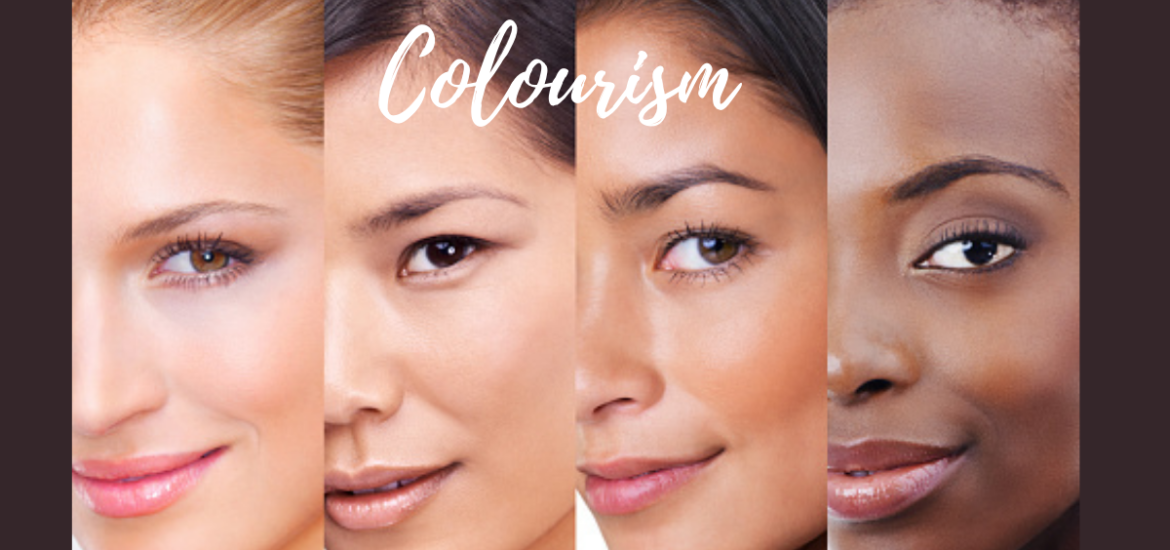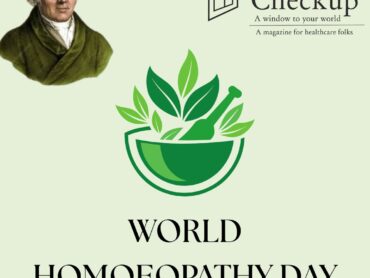She was only 6 years old.
The role of Princess in the school-play had gone to someone else, and she was heart-broken. Her Dadi-Maa merely sighed aloud, “With THAT skin, what was to be expected!”
She realised that the colour of her skin was UNFAIR as was people’s first reaction to her. This continued all through her life…. Being dissuaded from participating in outdoor sports (OMG! The suntan). Not being the popular girl/ teacher’s pet. The family gatherings where the aunties collectively (and audibly) wondered ‘Kaun shaadi karega isse?’ Overlooked at job interviews, working twice as hard as the ‘fair’ girls, passed over for promotions.
The blind dates that ended abruptly after the guy took a good look at her skin. The matrimonial sites with the colour filter. The infinite small cuts chipping away at her self-esteem and confidence. And of course! The incessant Melanin Diluting – Haldi-chandan, saffron milk, aloe vera pack, large scarfs and hats for outings, bleaches, ubtan, lime juice, fairness creams.
Over 50% of Indian girls (and some boys) undergo some form of this during their lives. This discrimination due to skin-colour or “Colourism” is so rampant in India that we can safely say that we are a “pigmentally-challenged” nation – a “pigmentocracy”, in fact.
HOW PIGMENTOCRATIC ARE WE?

Image Source: https://socialmirrorblog.wordpress.com/2014/03/29/only-fair-is-lovely-part-1/
It is estimated that in India, over 50% of women and nearly 70% of men accept fairness as a parameter of beauty. Preference is given to fair-skinned persons for jobs, promotions, etc., and social acceptance of a person depends on their skin tone. Scan any matrimonial site and the word “fair” exists across the spectrum, beating even education as a desirable criterion for life-mate. Little wonder that over 70% of all Indian women use fairness agents in some form and this includes women who are at the fairer end of the spectrum. So the dark girls want to get fair and the not-so-dark girls want to get fairer.
Unfortunately, no open discussion or constructive dialogue happens to address this issue. It is the ‘(white) elephant in the room’ that no one wants to point out.
WERE WE ALWAYS LIKE THIS?
Ancient Indians equated beauty with form, features, talent, charm, intelligence and character and not skin tone. Many dark-skinned Hindu gods such as Rama, Sita, Parvati, Krishna, Shiva, Kali, Draupadi, etc., are considered beautiful.
Colourism is a legacy from our Colonial “Masters”. The British (who were small in number) needed to employ “Local-yokels” for the governance of the Colony while preserving the myth of intellectual and physical superiority of White over Black. So the Gora Sahib systematically gave preference to fair-skinned Indians for white-collar jobs, education, political elevation, entry into “social circles”, business opportunities, etc. Darker skin hues were, on purpose, relegated to the army, blue-collar or menial jobs.
Two centuries of this mental conditioning and Ppigmentocracy is deeply entrenched in the Indian psyche. Most Indians instinctively associate dark skin with social, financial and moral inferiority.
FAIRNESS ‘INDUSTRY’

Image Source: https://feminisminindia.com/2020/02/12/punitive-measures-against-fairness-cream-ads-poor-mentality/
Anything and everything that touches our skin is game. A plethora of ‘whitening soaps’, creams, lotions, face packs, face washes (a thirty-second panacea!), sunscreens, vaseline exist, all of which make for a 5000 crore rupee industry.
“New bleaching technology” is now added to Vaginal washes eg: Clean And Dry which “restores discoloured skin, giving it a fair, glowing look”) )and tampons (Tampax-New Deep White “Designed to brighten (bleach) your vaginal walls”… “ white movie star vagina”)! Only product my research did not dig up is whitening mosquito repellent.
‘Fair and Lovely’, a Hindustan Lever product has been the leader with 70% of the market share. Others are Johnson and Johnson, Neutrogena, Garnier, etc.
Basically, media moguls, business tycoons and marketing mavericks have taken over where the British left off. A typical fairness ad storyline has a dark girl who is depressed, unadmired, unmarried, unwooed or a combination of these. A few weeks of the use of a fairness product…..and presto! All of her problems are solved. She becomes sought after, popular, married, ‘happy’!
As a nod to changing social dynamics (until recently, marriage was the only perceived goal for women!), recent trends in these ads portray fairer women as empowered and having the best jobs, education, impressive at interviews, etc.
Fairness products for men have also been launched, and account for around 20% of the market.
Image Source: https://www.findmedigo.com/sales-of-14-steroid-based-creams-restricted-by-health-ministry-for-indiscriminate-use-as-fairness-creams-but-the-core-issues-remain-unaddressed/
It is true that the fairness “industry” exploits our inherent prejudice. But it is also equally correct to say that it underlines and magnifies the complexes and insecurities in women who are trying to desperately fit into the Indian concept of beauty. Moreover, they promise impossible results while hiding the side-effects.
DRINKING THE KOOL-AID
Some film and sports personalities who have endorsed fairness products are Virat Kohli, Aishwarya Rai, Shahrukh Khan, Diya Mirza, Shriya Saran, Priyanka Chopra, Sonam Kapoor, Deepika Padukone.
The paucity of true heroes in our society has led to the Hindi film fraternity and sportspersons being idolised and idealised by the public. Celebrities are expected to have a sense of social and moral responsibility because public endorsements by them become the subconscious guide to thought and behaviour.
TRUTH BEHIND FAIRNESS CREAMS
Any fairness creams will only whiten up to 20% and that too, temporarily. At the most, it can get rid of skin tan, but cannot make one fairer than the skin one is born with.
Many fairness creams have a cocktail of steroids which after prolonged use can cause thinning of skin, acne, severe photosensitivity, growth of facial hair. Steroids at times exist in combination with antifungals and antibiotics and dermatologists have cautioned against indiscriminate use of such formulations. Topical formulations containing steroids are placed under schedule H and need a prescription since 2018.
Fairness creams also contain bleaching agents like hydroquinone that stretch and dry the skin.
Over half of the whitening creams contain mercury (which is toxic to the kidney) while some contain nickel and Chromium (which can cause skin cancer) may be present. Except for mercury, no BIS (Bureau of Indian Standards) guidelines exist for the permissible levels in topical creams.
Preservatives like paraben and artificial fragrance are added that can cause allergy and severe dryness. Severe patchy pigmentation can also occur due to whitening agents.
WHERE HAVE THE DARK GIRLS GONE?
The film and television industry prefers heroes of all skin-tones and shades to woo only fair-skinned heroines. The lighting of sets for entire films is at times manipulated to create a glowing fairer actor. ‘Dusky’ heroines are slathered with whitening make-up or replaced. Dark-skinned actors are often cast as negative characters (villains), thus furthering this unjust prejudice.
Hoardings, banners, print ads, posters, pamphlets, election campaigns, news channels feature fair-skinned or whitened persons, sometimes using Western models for products aimed at Indians eg. sarees or kitchenware.
We are an ethnically, racially and regionally diverse nation, with skin of many tones. So why does the media, ad and entertainment industry appear devoid of the darker hues?
FROM LIGHTNING TO ENLIGHTENMENT
Individuals and organisations have been campaigning against these ads and their not-so-subtle message of inferiority for years but to little avail. Nandita Das, the talented actor was the mind behind the “Dark Is Beautiful” campaign some years back. Her short music video “India’s Got Colour” highlights the fact that we are a country of the many-hued obsessed with just white.
Image Source: https://thelogicalindian.com/news/health-ministry-fairness-adds-19618
In 2014, the Advertising Standards Council of India issued fresh guidelines for cosmetic advertising. Ads which portray dark-skinned people as depressed or unsuccessful would not be permitted.
However, this was circumvented by ads which talked about glow or clear skin and life basically went on as before.
Abhay Deol, a film actor has spoken up against colourism, and Ranbir Kapoor, Sushant Singh, Kangana Ranaut have refused fairness cream endorsements.
BLACK LIVES MATTER
On May 25, 2020, George Floyd was killed during an arrest in Minneapolis and despite the constraints of the Corona pandemic, thousands took to the streets to protest the racism faced by African Americans. Global pigmentocracy took a big hit.
Global Brands that had until now blithely made excuses for their products (we supply what the market demands) and celebrities who endorsed them ( of course! black is beautiful, but the money is even better) scrambled to be politically correct. Even the media that had paid lip-service to the rights of the African-Americans and Latino people (and how do you feel about this?), found itself doing some serious reporting.
International brands changed the name of some creams (eg. Fair & Lovely became Glow & Lovely) and the colour filter was removed from a matrimonial website. Thus all of a sudden, colour sensitivity became as infectious as the Coronavirus globally.
THERE IS AN ELEPHANT IN THE ROOM
Essentially nothing is different. Changes are merely cosmetic (pun intended) and perhaps, temporary. We are still the skin-colour fixated race that we were. What has taken centuries to be instilled may take decades more to change.

Image Source: https://www.spotboye.com/trending/trending-news/matrimonial-website-removes-skin-colour-filter-beauty-brand-to-stop-selling-fairness-creams-amid-raging-debate-over-racism-and-colourism/5ef31de7dfb8c4229f9b3362
But more and more of us are at least acknowledging a deep flaw in our social fabric and that WE need to change. Perhaps this constructive dialogue and questioning of deep-rooted prejudices will lead to the eventual change in mind-set that Indian society needs.









